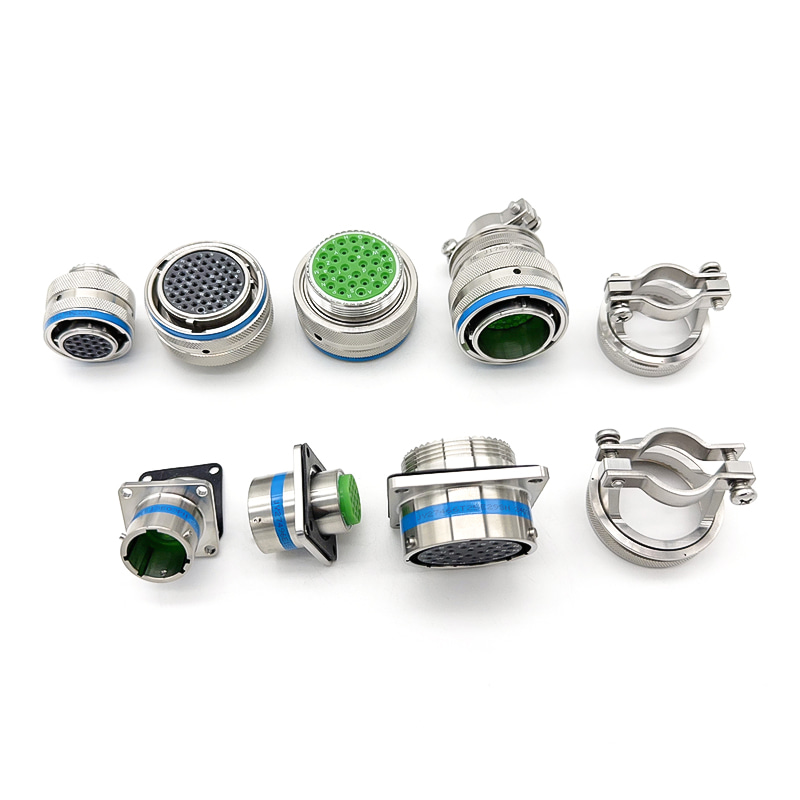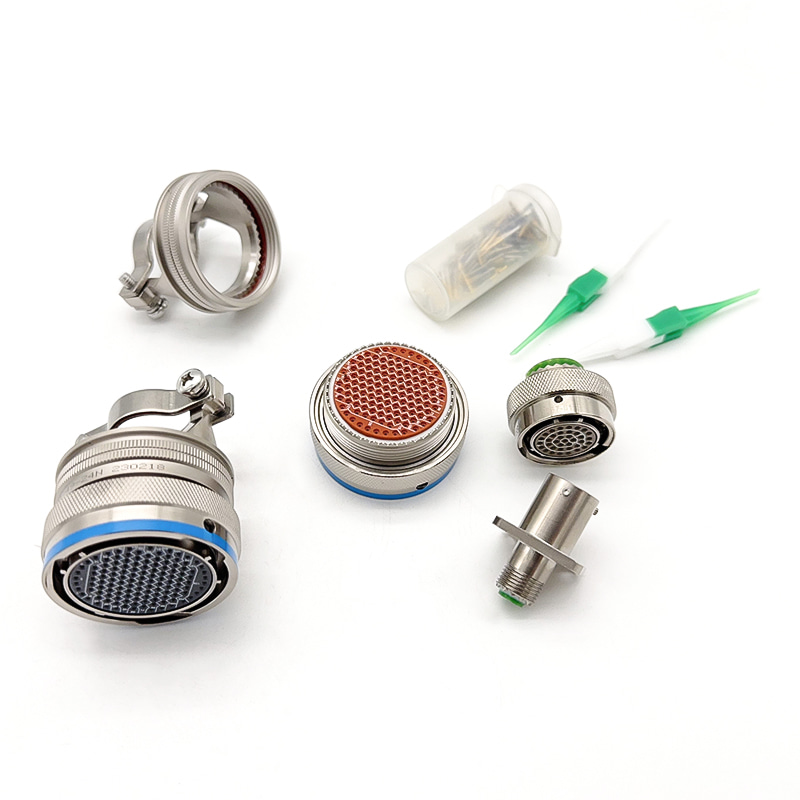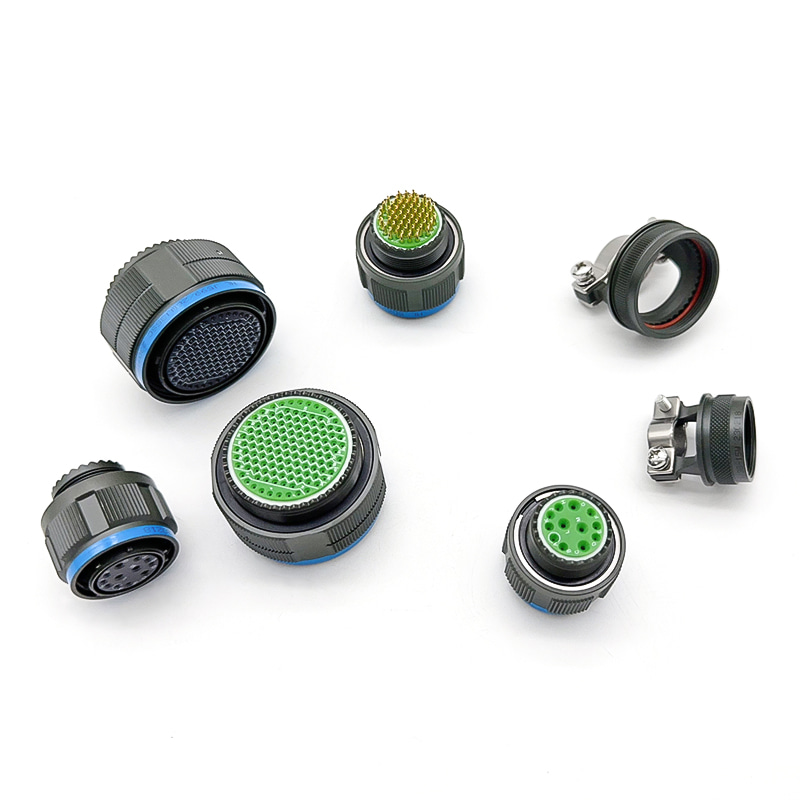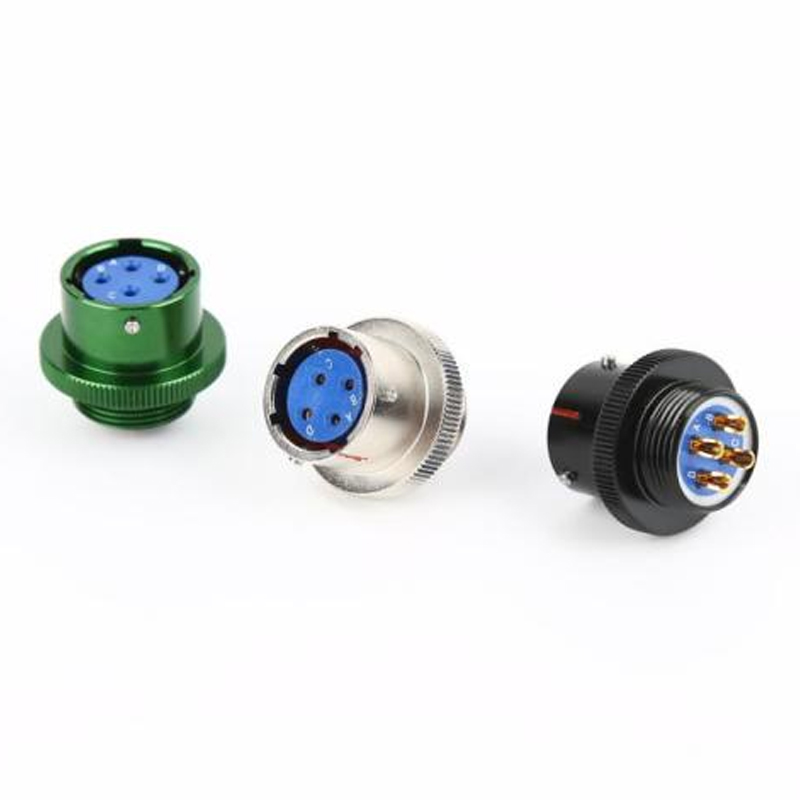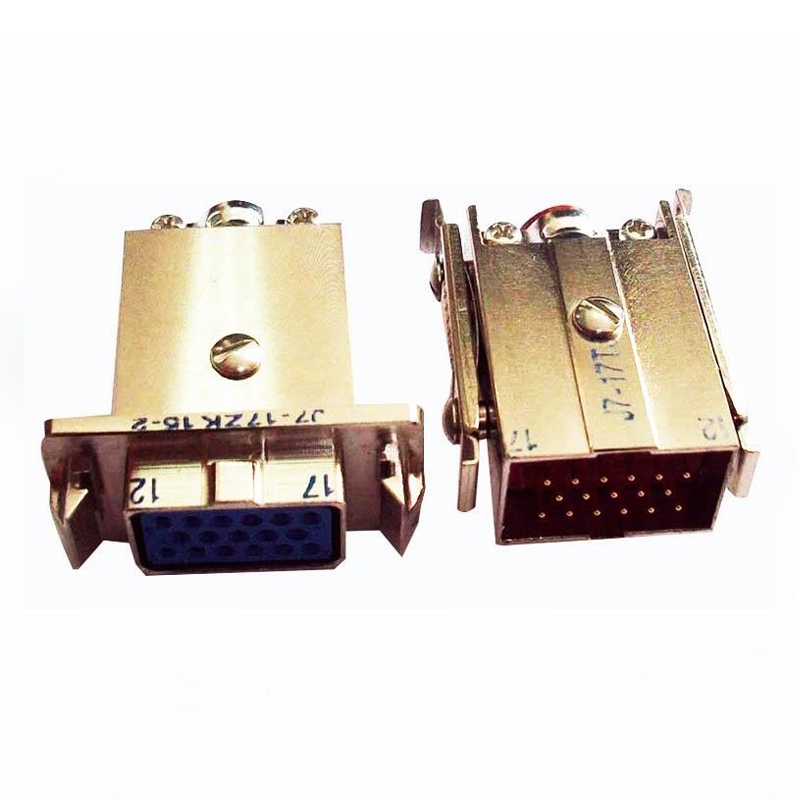- Home
- Products
- Solutions
- Quality
- Company
- Insight
- Contact
Web Menu
- Home
- Products
- Solutions
- Quality
- Company
- Insight
- Contact
Product Search
Exit Menu
MIL‑DTL‑26482 Series 1 vs Series 2: Key Differences & Application Guide
-
All News
Product
- - Military Electrical Connectors
- - Circular Electrical Connector
- - Rectangular Electrical Connector
- - Push Pull Self-Locking Connector
- - Russian Connectors
- - Cable Connectors
- - RJ45 and USB Electrical Connectors
- - Fiber Optic Electrical Connectors
- - Anti Water And Electricity Connectors
- - Circular Power Connector
MIL‑DTL‑26482 Series 1 vs Series 2: Key Differences & Application Guide
Introduction
Specification background of MIL‑DTL‑26482 Series 1 vs Series 2
The specification known as MIL‑DTL‑26482 defines a family of miniature, circular, quick‑disconnect, environment‑resisting electrical connectors used extensively in military, aerospace and harsh environment applications. :contentReference[oaicite:0] The connectors are divided into two series: Series 1 and Series 2, each with distinct features and target use‑cases.
Overview of Taizhou Henglian Electric Co., Ltd. and relevance to military/connectors
Taizhou Henglian Electric Co., Ltd. was founded in April 2011, located in Taixing City, with specialization in development, production and sales of electrical connectors. The company is equipped with advanced machinery, testing facilities, and holds certifications including GJB9001C‑2017 weapons & equipment quality management system certification. It offers a wide range of circular and rectangular electrical connectors that meet military standards. Within this context, understanding the difference between Series 1 and Series 2 of MIL‑DTL‑26482 is important for designers and procurement professionals that collaborate with Henglian for military, marine, aerospace or industrial connector solutions.
Understanding the Two Series
What is Series 1 — core features
The first series — referred to as MIL‑DTL‑26482 Series 1 — typically features bayonet coupling, solder termination (or front‑release crimp in some variants), and is "scoop‑proof". It has been widely used in legacy military and aerospace systems, and is still relevant in applications where solder‑terminated connections are acceptable.
What is Series 2 — core features
The second series — MIL‑DTL‑26482 Series 2 — was developed to enhance maintainability and performance. It typically employs rear‑release crimp contacts, maintains the bayonet coupling interface for backward‑footprint compatibility, and supports higher temperature and modern service demands.
Commonalities between Series 1 and Series 2
Both series share the same bayonet coupling mechanism, similar shell sizes and contact arrangements (3 to 61 contacts), and meet the environmental‑resisting requirements of MIL‑DTL‑26482. They are intermateable when using standard power or signal contacts (though shielded contacts may differ).
Key Differences Between Series 1 and Series 2
Contact termination style
- Series 1: Solder contacts or front‑release crimp.
- Series 2: Rear‑release crimp contacts, easier field serviceability.
Serviceability & maintenance
- Series 1: Less convenient to replace individual contacts in the field because solder and front‑release may require special tooling.
- Series 2: Designed for easier maintenance—rear access allows removal/insertion of contacts without fully disassembling the connector.
Temperature, weight and profile
- Series 2: Often supports higher temperature ratings (e.g., up to 200 °C in some classes) and may offer lighter or more compact variations.
- Series 1: Respected for reliability but may not support the same high‑temperature variants or optimized weight reduction.
Compatibility & intermateability
- Series 1 and Series 2 share same shell interface and coupling so basic intermateability is maintained for standard contacts.
- However: When special shielded or high‑density contacts are used, compatibility may differ—careful verification required.
Table: Comparative summary
| Feature | Series 1 | Series 2 |
| Contact termination | Solder or front‑release crimp | Rear‑release crimp |
| Maintenance ease | Moderate | High |
| Temperature rating | Standard (e.g., ‑55 °C to +125 °C) | Extended (up to +200 °C in some classes) |
| Weight/profile optimisation | Original design | Lighter profile variants available |
| Intermateability | Yes (standard contacts) | Yes (standard contacts) but check shielded variant compatibility |
Summary of suitability by difference
The critical takeaway: If serviceability, crimp‑termination and potentially higher temperature/weight optimisation are desired, Series 2 offers clear advantages. If legacy solder‑terminated systems are in place or cost sensitivity is prime, Series 1 remains valid.
Application Scenarios & Selection Guide
When to use Series 1 (e.g., legacy systems, solder preference)
- Aerospace or military platforms already designed for solder terminations and where field maintenance is minimal.
- Systems where the wiring harness is fixed and frequent disconnection or contact replacement is unlikely.
- Budgets favour traditional technology and the application temperature / weight demands are moderate.
When to choose Series 2 (e.g., high‑reliability, modern aerospace)
- Applications requiring frequent maintenance, contact replacement or modularity — the "**MIL‑DTL‑26482 Series 1 vs Series 2 in aerospace installations" question often arises here.
- Systems operating in more extreme temperatures, higher vibration environments, or where weight/space are at premium — the "**MIL‑DTL‑26482 Series 2 high temperature rating connector use‑case" scenario.
- New design programmes targeting long service life, high reliability and easier life‑cycle support.
Example industry use‑cases (aviation, marine, ground equipment)
- Aviation: rigid mounting of connectors in fuselage or avionics bays with both Series 1 and Series 2 footprints.
- Marine / shipboard: environment‑resisting circular connectors where quick maintenance is needed — Series 2 often preferred.
- Ground mobile/vehicle: rugged environment, vibration, maintain‑in‑field — the "**MIL‑DTL‑26482 Series 1 solder contacts applications" vs Series 2 crimp decision becomes key.
Checklist: How to choose between Series 1 and Series 2
- Will contacts require replacement in the field? → If yes → Series 2.
- Are solder terminations acceptable and cost is primary concern? → Possibly Series 1.
- Are you constrained by temperature, weight or space? → Series 2 likely better.
- Is there legacy specification or existing harness designed around Series 1? → Series 1 may simplify integration.
- Are shielded contacts or very high‑density inserts needed? → Verify compatibility carefully, lean Series 2 for flexibility.
Why Taizhou Henglian Electric Co., Ltd. is a Trusted Supplier
Company profile and credentials
Taizhou Henglian Electric Co., Ltd., founded April 2011 in Taixing City (the so‑called "Ginkgo town" of the riverside city), is a high‑tech enterprise specialising in electrical connector development, production and sales. The company employs over 150 staff including more than 30 professionals with technical titles, owns fixed assets of 30 million yuan, and is equipped with a variety of mechanical processing equipment and testing equipment.
Manufacturing capability & quality system
The company has been recognised as a "Top Ten enterprise in Zhangqiao Town", and also received the "Taixing Outstanding Contribution Award". Its quality management system is certified to GJB9001C‑2017 (weapons & equipment quality management), and the company holds second‑level secret certification status in weapons & equipment production and research units. These credentials demonstrate that Henglian is well placed to supply connectors meeting demanding military standards such as MIL‑DTL‑26482 Series 1 and Series 2.
Product range relevant to MIL‑DTL‑26482 applications
Henglian's leading products include circular connectors (Y11, Y17, Y27, Y50, YGD, YLH, YM, YW, XC series) and rectangular (J7, J14, J20J, J29A, J30J, J63A series) which are aligned with national and military standards. These products cover fields such as personnel gear, final assembly, sea installation, ballistic systems, aerospace, nuclear energy, railway, national grid, oil and geophysical exploration — all environments where MIL‑DTL‑26482 style connectors may be specified for signal/power interconnects.
Customer value & service philosophy
The company adheres to the spirit of "integrity‑based, unity and hard work, realistic innovation, pursuit of excellence" and the brand‑value concept of "brand create value". Dedicated to customer service, Henglian quickly positions itself as a peer‑leading connector solution provider. When selecting between Series 1 and Series 2 for a new design or refurbishment, partnering with a supplier like Henglian ensures both technical guidance and manufacturing quality.
Conclusion
Recap of core differences and scenario advice
In summary, when comparing MIL‑DTL‑26482 Series 1 vs Series 2, the key differences lie in contact termination style, serviceability, temperature/weight optimisation and maintenance‑friendliness. Series 1 remains valid in legacy, cost‑sensitive or solder‑based systems. Series 2 offers better field serviceability, modern termination (rear‑release crimp), and is better suited for new, high‑reliability, high‑temperature or space/weight‑sensitive applications.
Final selection tips
Use the checklist above to decide whether the "**how to choose between MIL‑DTL‑26482 Series 1 and Series 2**" decision points favour Series 1 or Series 2. Ensure your specification, harness design, maintenance regime and operating environment are aligned with the series you choose. With a strong manufacturing partner like Taizhou Henglian Electric Co., Ltd., you can proceed with confidence that both series can be supported with professional quality, testing and service.
FAQ
- Q1: Can connectors compliant with Series 1 and Series 2 fully mate with each other?
A: Yes, standard power or signal contacts are intermateable between Series 1 and Series 2 under MIL‑DTL‑26482, but when using shielded or special insert configurations compatibility should be verified. - Q2: Which series supports higher temperatures?
A: Series 2 often supports higher temperatures (up to +200 °C in some classes) compared with standard Series 1 ratings. - Q3: Why would I still choose Series 1 today?
A: If you are working with a legacy system designed around solder contacts, or want the cost‑benefit of tried‑and‑true technology where maintenance is minimal, Series 1 remains a viable option. - Q4: What applications are ideal for Series 2?
A: Applications requiring easy contact replacement, high reliability, weight/space constraints, higher temperature or frequent maintenance – for example modern aerospace, marine systems, ground vehicles. - Q5: Does the choice between Series 1 and Series 2 affect my supplier decision or manufacturing process?
A: Yes — your manufacturing partner must be equipped for either solder termination (Series 1) or crimp/rear‑release termination (Series 2), and quality systems should cover the specific requirements of the series. Working with a company like Taizhou Henglian Electric Co., Ltd., which has experience in military‑standard connectors, ensures your process aligns with specification.

- Address : Jiangping South Road, Zhangqiao Industrial Park, Taixing City, Jiangsu Province, China
- Phone : +86 176 0151 5794
- Whatsapp : +86 176 0151 5794
- Email :[email protected]
- Email :[email protected]
- Home
- Products
- Solutions
- Quality
- Company
- Insight
- Contact
Copyright © Taizhou Henglian Electric Co., Ltd China Custom Electrical Connectors Manufacturers

 English
English русский
русский Español
Español 简体中文
简体中文